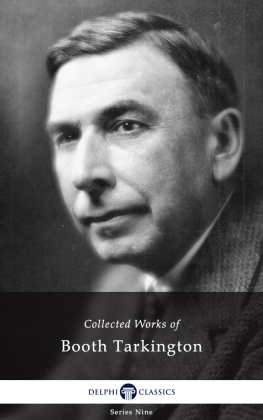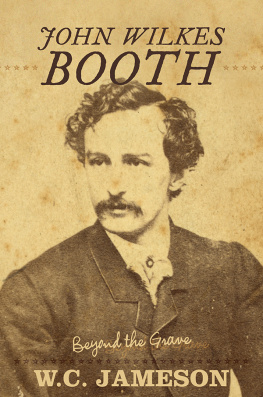The Collected Works of
BOOTH TARKINGTON
(1869-1946)

Contents

Delphi Classics 2018
Version 1


Browse our Main Series

Browse our Ancient Classics

Browse our Poets

Browse our Art eBooks

Browse our Classical Music series

The Collected Works of
BOOTH TARKINGTON

By Delphi Classics, 2018
COPYRIGHT
Collected Works of Booth Tarkington

First published in the United Kingdom in 2018 by Delphi Classics.
Delphi Classics, 2018.
All rights reserved. No part of this publication may be reproduced, stored in a retrieval system, or transmitted, in any form or by any means, without the prior permission in writing of the publisher, nor be otherwise circulated in any form other than that in which it is published.
ISBN: 978 1 78656 407 8
Delphi Classics
is an imprint of
Delphi Publishing Ltd
Hastings, East Sussex
United Kingdom
Contact: sales@delphiclassics.com

www.delphiclassics.com
Explore American Masters with Delphi Classics

For the first time in digital publishing history, Delphi Classics is proud to present the complete works of these important American authors.
Explore Americans
The Growth Trilogy

(1915)
(1918)
(1924; re-titled National Avenue in 1927)
The Penrod Series

(1914)
(1916)
(1929)
The Novels

Indianapolis, Indiana Booth Tarkingtons birthplace

Indianapolis, c. 1904

The author was named after his uncle and Governor of California, (Booth) Newton Tarkington
The Gentleman from Indiana

The Gentleman from Indiana was first published in America in 1899. It was the authors debut novel and it proved to be a modest commercial success. Tarkington would go on to become one of the most famous American novelists during the first three decades of the twentieth century. He was not only widely read during his lifetime, but is also only one of three novelists, alongside William Faulkner and John Updike, to ever receive the Pulitzer Prize for Fiction more than once. The Pulitzer prizes were established in 1917 when newspaper publisher, Joseph Pulitzer, left money in his will to Columbia University to open a journalism school. The Pulitzers would become some of the most coveted awards for journalists as well as authors of novels, dramas, history, poetry and biography.
The Gentleman from Indiana centres on John Harkless, a young law school graduate, who chooses, against expectations, to settle down in a small, dreary town in Indiana. He soon becomes the owner and editor of a local newspaper and discovers that the town is represented in the Senate and House of Representatives by corrupt officials. Harkless is determined to expose and defeat the evil that permeates the town and is desperate to win justice for his community, even if it means taking on violent forces and placing himself in physical danger. Tarkington would actually briefly become a member of the legislature in 1902 when, running for the Republican Party, he was elected to the Indiana House of Representatives for one term. In 1915, the novel was adapted as a silent film starring Dustin Farnum and Winifred Kingston and directed by Frank Lloyd.

Advertisement for the 1915 silent film
CONTENTS

The first edition of the novel
CHAPTER I. THE YOUNG MAN WHO CAME TO STAY

T HERE IS A fertile stretch of flat lands in Indiana where unagrarian Eastern travellers, glancing from car-windows, shudder and return their eyes to interior upholstery, preferring even the swaying caparisons of a Pullman to the monotony without. The landscape lies interminably level: bleak in winter, a desolate plain of mud and snow; hot and dusty in summer, in its flat lonesomeness, miles on miles with not one cool hill slope away from the sun. The persistent tourist who seeks for signs of man in this sad expanse perceives a reckless amount of rail fence; at intervals a large barn; and, here and there, man himself, incurious, patient, slow, looking up from the fields apathetically as the Limited flies by. Widely separated from each other are small frame railway stations sometimes with no other building in sight, which indicates that somewhere behind the adjacent woods a few shanties and thin cottages are grouped about a couple of brick stores.
On the station platforms there are always two or three wooden packing-boxes, apparently marked for travel, but they are sacred from disturbance and remain on the platform forever; possibly the right train never comes along. They serve to enthrone a few station loafers, who look out from under their hat-brims at the faces in the car-windows with the languid scorn a permanent fixture always has for a transient, and the pity an American feels for a fellow-being who does not live in his town. Now and then the train passes a town built scatteringly about a court-house, with a mill or two humming near the tracks. This is a county-seat, and the inhabitants and the local papers refer to it confidently as our city. The heart of the flat lands is a central area called Carlow County, and the county-seat of Carlow is a town unhappily named in honor of its first settler, William Platt, who christened it with his blood. Natives of this place have sometimes remarked, easily, that their city had a population of from five to six thousand souls. It is easy to forgive them for such statements; civic pride is a virtue.
Next page































